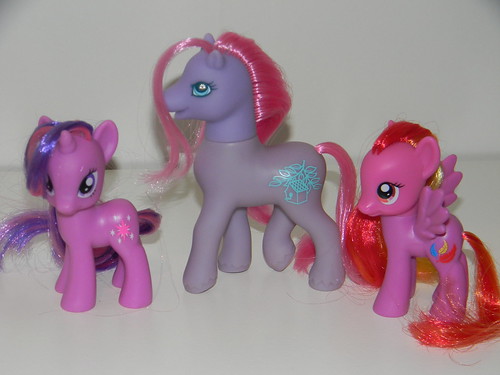The unfortunate truth about vintage Ponies is that very few of these 30+ year old toys has made it this far without sustaining some kind of damage. The even more unfortunate truth is that we're only going to see more damage coming out on these beloved friends as time passes. In the next few weeks, I'm going to explore some of the more common problems that we see in vintage ponies, with an eye toward educating new collectors and warning FIM fans about what they might expect from their Ponies in the coming years.
This week's episode is on Discolouration and Fading. These are probably the most common problems collectors encounter.
Discolouration
MLPs are subject to numerous types of discolouration, and many of the problems discussed in later posts will cover these. This week, I want to talk in more general terms.
Hasbro has, unfortunately, long used different types of plastic in manufacture of the head and body of individual MLPs. Although the toys often look fine right out of the package, time will often show the difference as the dye used to colour the pony leeches faster out of one part of the pony.
 |
| Twilight and Feathermay will, unfortunately, someday resemble Wingsong |
 |
| The two Peachys on the right are the same release, but the middle one is sun damaged. The Peachy on the left is the Italian varient. |
Fading
It doesn't take much exposure to light to cause the bright colours of MLP to begin to fade. Certain colours can begin to lose their vibrancy with only a few minutes of sun exposure. Camera flashes and indirect light can also hurry fading along.
The most notorious colour for fading on MLP is a hair colour that collectors refer to as "fading pink." Fading pink begins life as a bright, vibrant, almost florescent shade but if exposed to sunlight it quickly fades away and can turn completely white in a very short time. In fact, it fades so quickly that often collectors discover that a pony whom they've always thought was made with white hair was actually rooted with fading pink. UK Mountain Boy Tornado and Argentina Baby Ribbs are two such ponies, who are often so often seen with completely faded hair that they are thought to originally have had white hair.
 |
| Believe it or not, all of these ponies started life with the same bright pink hair that you see on the left |
Elf

No comments:
Post a Comment